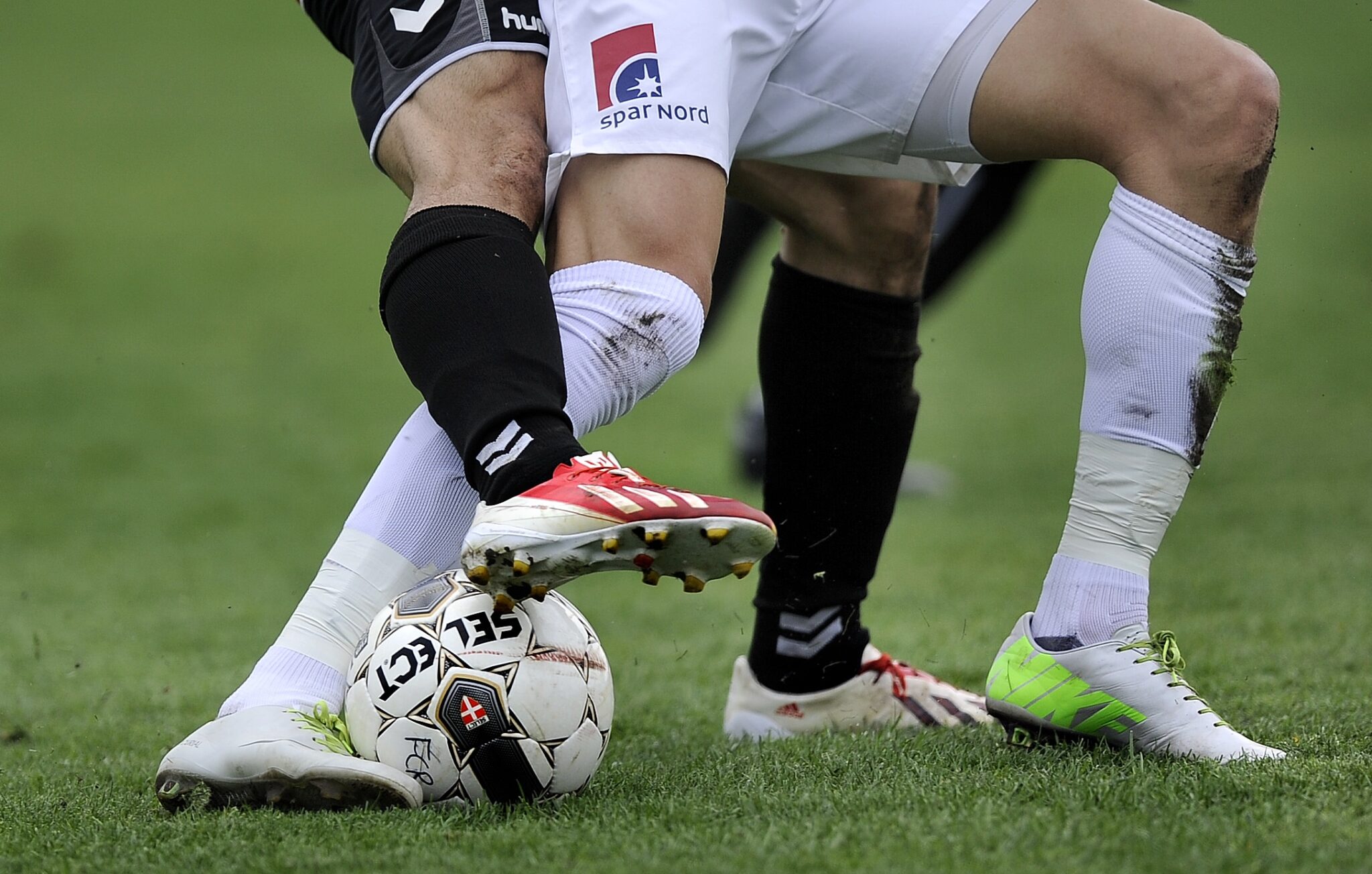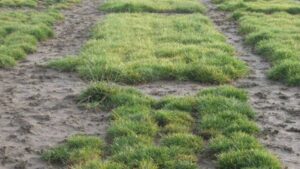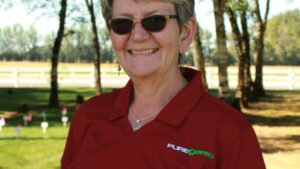Zooming in on how to breed the best sports turf grass
Some say watching a high-end soccer match is watching 22 millionaires ruining a perfect grass pitch. For many others, it is what they have been eagerly waiting for, for a long time. In the case of Euro 2020, for five years. From 11 June to 11 July 2021, the Euro 2020 soccer tournament will —finally — take place, this time not in one but in 12 European countries. As all eyes will be on the ball, rolling on perfectly kept grass pitches, it is a great opportunity to dive into the challenges of breeding the best grass varieties for sports matches.
European Seed asked several sports grass breeders about their goals and challenges towards breeding ever better grass varieties that can withstand the wear and tear of highly combative players.
Breeding Goals
When asked about the most important breeding goals for sports turf grass, all companies agree that wear tolerance is at the top of the list of their breeding goals.
Tim van der Weijde, Grass Breeder & Research station manager at Barenbrug explains that they have several breeding goals in their sports turf grass breeding programmes. “Apart from wear tolerance, the most important arepersistency and disease tolerance; seed yield and drought tolerance.”
“Disease resistance, drought tolerance and colour, in that order, are next in our list of breeding goals,” says Anne Mette Dahl Jensen, Product Development Manager Turf grass at DLF.
Crystal Rose-Fricker, President of Pure Seed & Pure-Seed Testing concurs, adds that density, disease resistance, shade tolerance for some stadia and tolerance of close mowing are receiving the most attention when developing new varieties.
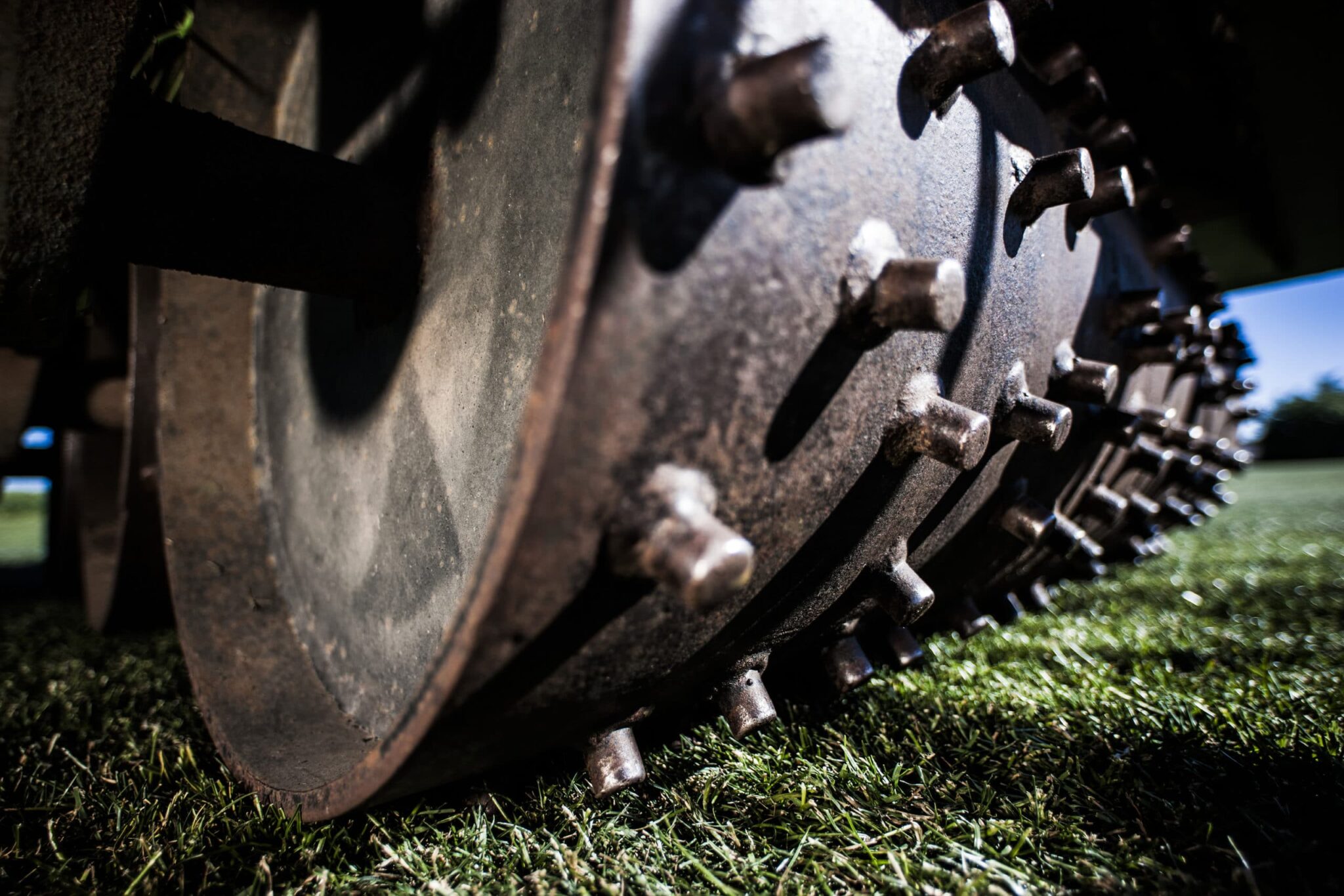
Selection of the Best Varieties
“To select the best varieties for sports turf grass, we have trials with simulated wear at both breeding and independent trial stations around the world. Plus manual assessments and drone imaging to score for other key data like colour, disease resistance, shoot density and winter damage” says Dahl Jensen.
By testing breeding material in different environments and locations with high disease pressure, cold winters, etc., the company puts it under maximum pressure to spot the best candidates for the sports turf lists. “Turf breeding companies actually torture the breeding lines to identify the elites, and the breeders have specialized machinery to simulate tough wear, similar to football boots with metal studs,” she adds.
For Dr. Melodee Fraser, Director of Research at Pure-Seed Testing East, it is the simulated traffic and wear trials that are an excellent way of selecting which varieties are best. “And we combine these with shade trials, trials in a variety of climates, trials at low mowing heights and trials with reduced to no fungicides to make our selections.”
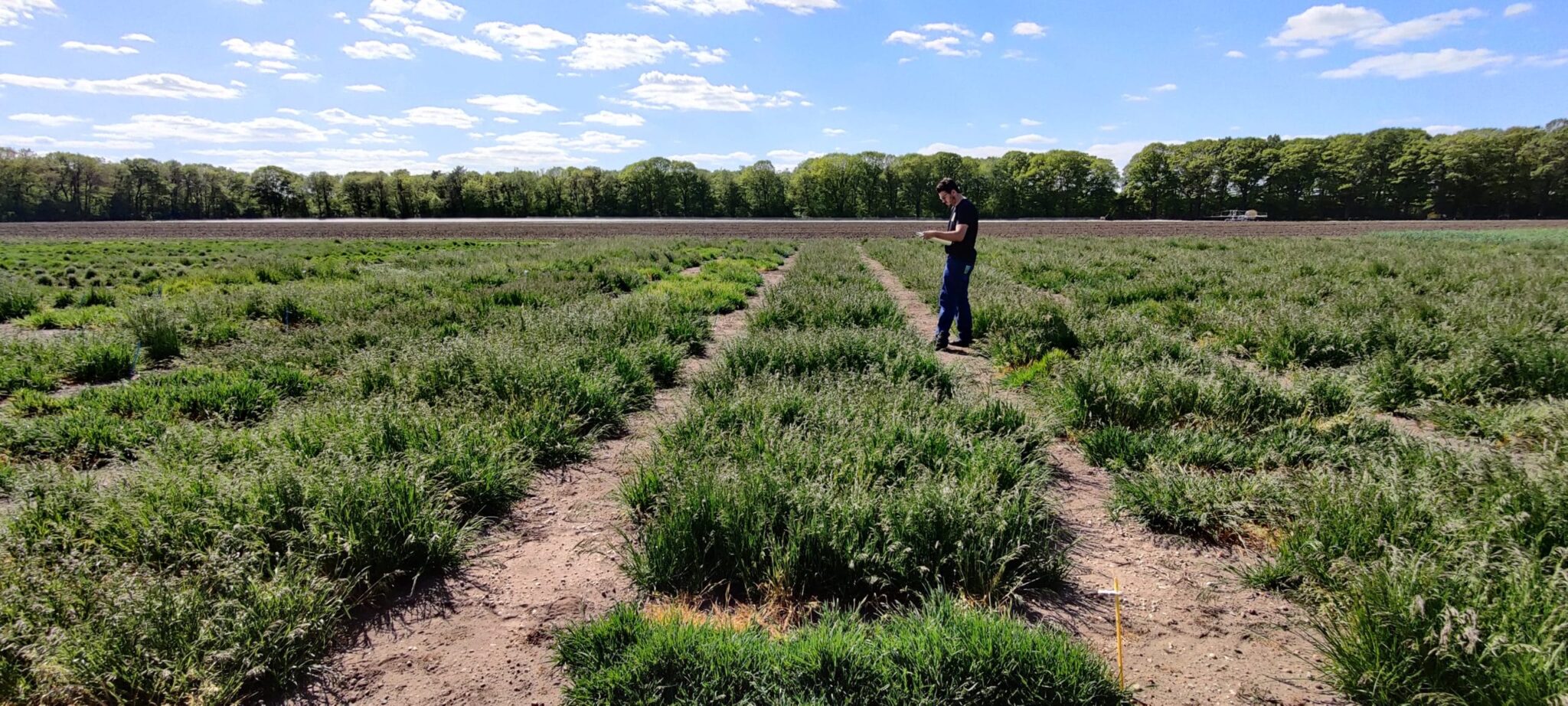
“We sow many thousands of 1 m2 plots every year to test the wear tolerance in the field in Wolfheze, The Netherlands (NL),” says van der Weijde. Custom-built heavy machinery drives over the plots two to three times a week. The custom-built machine is designed so one pass of the machine resembles one soccer match. The thousands of plots each respond differently because the grass seeds are of different genetic constitution.
“The low performers are quickly turned into bare soil because they can’t stand this level of wear. The top performers (preferably across multiple field trials in different parts of Europe) are the ones that maintain a high percentage of green cover and that quickly recover from the damage of the machine. These are then selected for seed multiplication and advanced to official trials, which are established and treated in the same way in three field trials in different parts of NL,” he adds.
Sod Production
Regarding sod production, turfgrass varieties with rapid establishment, disease resistance and a good root system are key. “Within species groups there are large differences in these traits; selecting the appropriate varieties is paramount.” Austin Fricker, VP of Research at Pure-Seed Testing says, “On top of the traits of the varieties, mechanical purity of the seed and high germination rates are necessary.” Only the top-quality seed is eligible for sod use.
Turf grass varieties are utilized for sod production but also for overseeding. Looking at the first use, sod production, Austin Fricker, VP of Research at Pure-Seed Testing says. He adds the most important features for turf grass seed for sod production are high purity and germination. “But we also look at a rapid establishment and a good root system.”
“First, the mixture needs to be a blend of species that will establish quickly and form a dense and well rooted matt,” says Dahl Jensen. “And creeping grasses, like creeping red fescues and smooth-stalked meadow grass are very effective in this way. The grasses then need to be both fine and dense in appearance, with excellent natural disease resistance which reduces production costs and maintenance costs for the end user.”
The two grass species, perennial ryegrass and smooth-stalked meadow-grass, are commonly used for heavy duty sports fields. This is due to the unique wear tolerance they both present and to the self-repair strength of especially smooth-stalked meadow grass. The slower establishment of the smooth-stalked meadow grass is outweighed by the fast-establishing perennial ryegrass.

More Than Wear and Tolerance
Van der Weijde adds that in their sports grass breeding programmes, the most important features are wear tolerance, a quick and even germination, sod density and disease resistance.
Dahl Jensen adds that once all criteria are met, it is critical that the seed lots are pure and free from coarse grasses and aggressive weeds. “Once a coarse grass has established in the field, it’s almost impossible to remove it from the turf without very expensive intervention. Therefore, the quality of the seed production is crucial. In our company, the seed production of high-quality turf varieties is carried out with an integrated approach and an end-to-end control to obtain the highest quality – labelled DLF Select,” she says.
Very few clubs use turf for stadia these days, as natural grass seed establishes very fast. Most of the high-end stadia use a hybrid pitch system which means they can’t be turfed.
“For fast establishment in combination with a hybrid turf solution, a mixture of turf perennial ryegrasses, often five to six different varieties, will be a fine choice,” says Dahl Jensen.
Multi-function stadia that are used for sports and different events such as concerts may need to replace their turf several times during the season. In that case, 4 cm thick magnum turf-rolls can be installed and made playable in a short time frame.
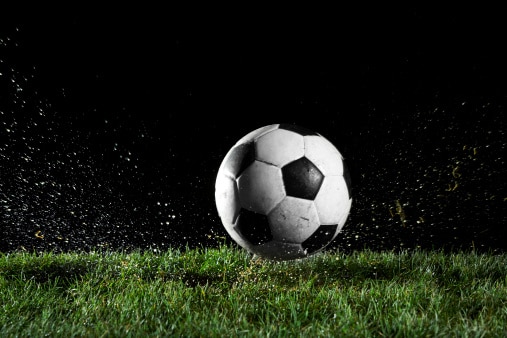
Overseeding
Certain turf grass varieties are selected specifically for overseeding, especially important for stadia and sod producers.
According to Dahl Jensen, it would depend on when you are overseeding. For example, if it was for end of season renovation, it would be wear tolerance, disease resistance, drought tolerance and colour.
“But if you are doing in-season overseeding, then speed of establishment would be a bigger factor, although all diploid turf perennial ryegrass cultivars are fast to germinate. The larger seeded 4turf tetraploid perennial ryegrasses and our turf annual ryegrasses are able to germinate very fast at low temperatures. They can be used when soil temperatures are less optimal in the autumn and spring months,” she adds.
Rose-Fricker mentions that the varieties they select for overseeding should have a high purity and germination, rapid establishment and a good colour. “But also, high density and wear tolerance are equally important.”
The fact that many stadia now have light rigs and under-soil heating makes germination less of a worry. So, breeders are back to wear tolerance, disease resistance and colour as primary features. “This is a significant reason that grounds managers have taken the new 4turf varieties onboard, as this type of perennial ryegrass is in a special league when it comes to stress tolerance and disease resistance and thus have lesser need for fungicide usage” says Dahl Jensen.
Innovative Features in Turf Grass
Despite the fact that ‘watching grass grow’ would indicate that grass might be boring, there is quite some innovation taking place in turf grass breeding.
“One of the most innovative features is Regenerative Perennial Ryegrass (RPR), that forms a network in the sod thanks to the formation of stolons,” says van der Weijde. This helps to make a strong sod and quickly fills damaged spots. Another important feature is grey leaf spot resistance. Grey leaf spot is an upcoming problem across Europe and is a truly devastating disease infecting turf fields.
“We offer grey leaf spot resistant varieties that are specifically selected for this disease. And last but not least, we offer Resilient Blue Grass Technology (RBGT). This is a grass innovation that contains perennial ryegrass and smooth-stalked meadow grass varieties selected for improved drought tolerance and with a seed coating that retains water around the seed for enhancing germination. It is mixed with RPR for a combination of the two innovations. The varieties are also resistant against grey leaf spot,” says van der Weijde.
“Some of the innovative features we are working on in turf grass are drought tolerance and salinity tolerance,” says Fraser.
Features for Evaluation
Turf grass varieties are evaluated by NTEP (National Turf Evaluation Program) in the U.S. and institutions in Europe, including the British Bingley Sports variety list, the Dutch turf grass list and similar bodies in France, Germany, Denmark and other countries.
Features including high wear tolerance, high shoot density and excellent regeneration ability after physical wear are evaluated. On top of this, disease tolerance, speed of establishment, visual merit, salt tolerance and drought tolerance are important.
Dahl Jensen adds that low input is very important in combination with good wear and playability. “Breeders look for low-input varieties, which require less irrigation, less plant protection agents and less mowing for more sustainable lawns,” she says.
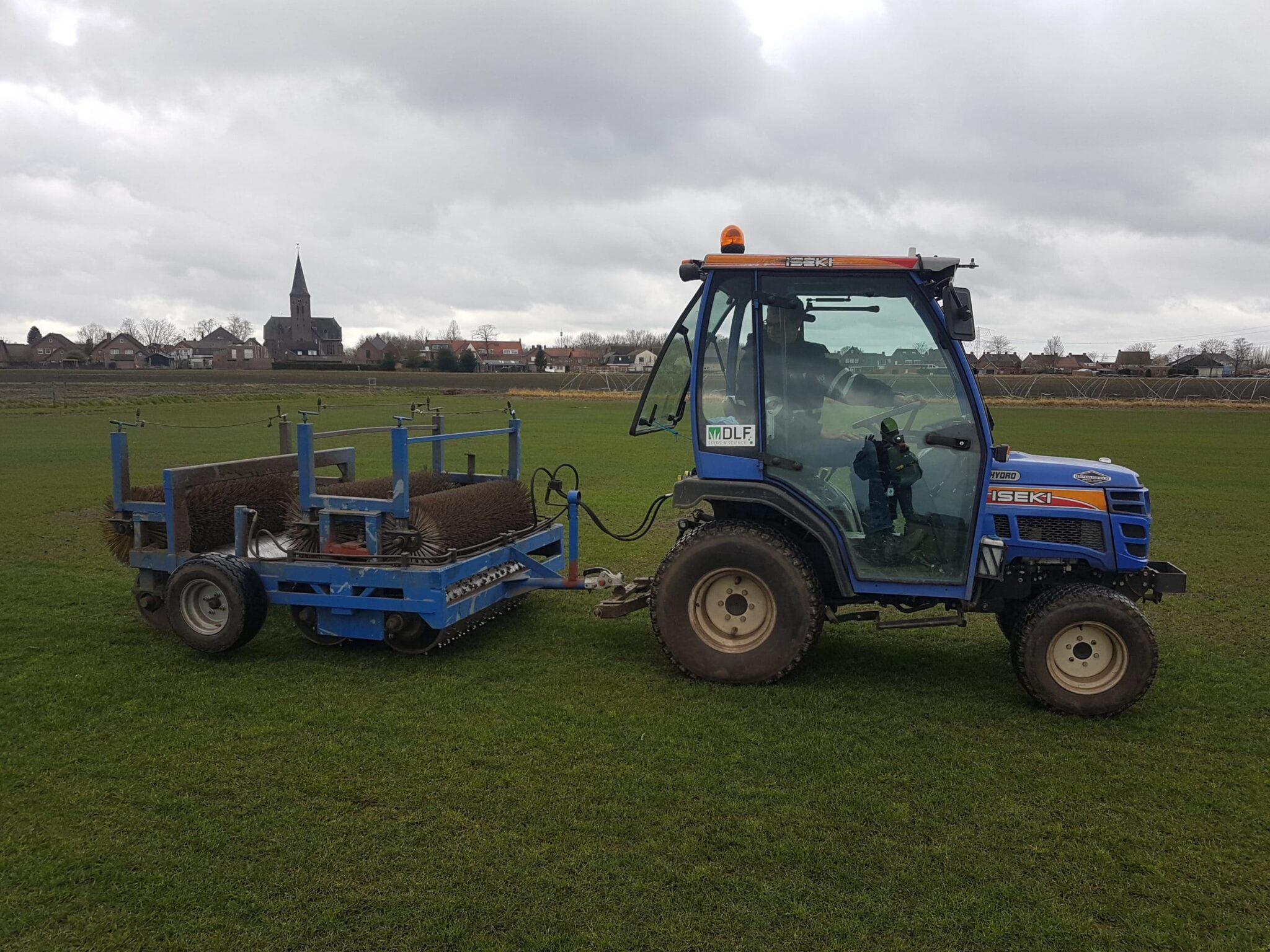
Which Species to Choose in a Stadium?
“For us the most important species are perennial ryegrass and smooth-stalked meadow grass as these two have the best wear tolerance,” says van der Weijde.
According to Dahl Jensen, perennial ryegrass is the most important species in the UK and Northern Europe. She says in the warmer climates of Southern Europe, perennial ryegrass is mainly used for overseeding on Bermuda grass basis. “Smooth-stalked meadow grass is more used in sod production together with tall fescue, but this is not primarily for the soccer field market.”
Fricker shares that the species used most for stadium turf grass are perennial ryegrass, followed by smooth-stalked meadow grass, bermudagrass and seashore paspalum.
Dealing with Different Climatic Conditions
Choosing the right species or mix of species is crucial for the quality of the sports pitch, and depends on the climatic conditions of the location, such as heat, cold or drought.
Rose-Fricker states the type of season determines which species to go with. “If it’s the cool-season we’d recommend a mixture of ryegrass and smooth-stalked meadow grass that is good for cold and drought. If it is for a warm season, you should go for bermudagrass. But if it’s a warm season with lower light, then it would be better to go for seashore paspalum. And if there are salinity issues, we have cultivars in each species to deal with that, but seashore paspalum is the best.”
“Our 4turf perennials are a fantastic choice for all of the above conditions,” says Dahl Jensen. The larger root system means these varieties cope very well with heat and drought, especially the spring drought where the grass depends on long roots and a high root mass density.
“And the high natural diseases resistance means they cope well in the winter months when other grasses struggle to photosynthesize with the low light levels. The 4turf tetraploid perennial ryegrasses are in several ways more shockproof than the rest.”
Smooth-stalk meadow grass and tall fescue can also be useful in hot dry conditions, although most stadia can irrigate so again this would not be a concern.
Looking at the Mediterranean area under more heat and dry conditions, turf perennial ryegrass is generally not used as much as it is further north in Europe. “For overseeding, warm-season Bermuda based pitches during the winter, it is diploid perennial ryegrass that is the preferred choice. During spring, the Bermuda grass will take over again and become the dominant species. Tall fescue remains the main temperate species in general for heat and drought resistance and salt tolerance in the south,” says Dahl Jensen.
Generally, companies and stadia specify their grass based on the dominant stress, e.g., wear and disease, and then manage the environment to deal with the minor issues.
Who will you be rooting for? The match schedule can be found here:


